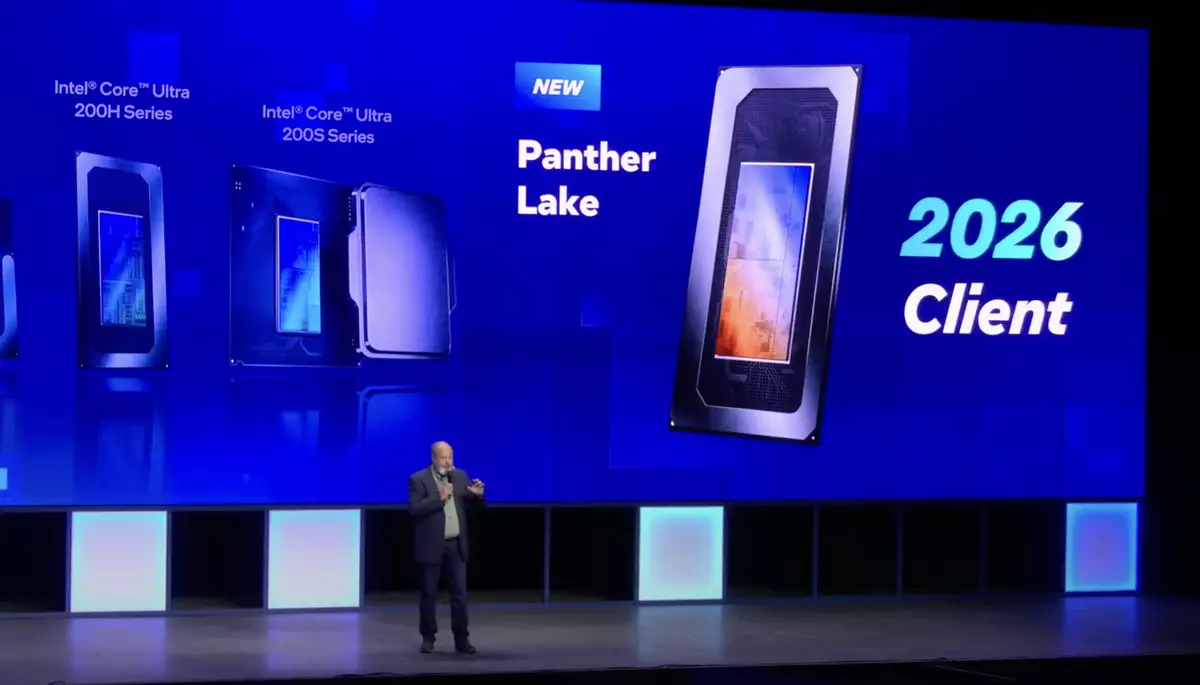At Intel’s recent Vision 2025 event, outgoing CEO Lip-Bu Tan took center stage, showcasing the company’s plans for the future of technology and computing. While many had hoped for groundbreaking product launches to accompany the presentation, the revelations were largely modest regarding immediate offerings. Instead, attendees were introduced to the Panther Lake CPU, a chip that Intel claims could redefine the mix of power and efficiency in personal computing. Yet, the announcement did little to quell the apprehension surrounding Intel’s ability to deliver on its once-storied promise.
Understanding Panther Lake: A Fusion of Technologies
Panther Lake is positioned as a synergy between two of Intel’s significant architectural concepts: Lunar Lake and Arrow Lake. Given that both are manufactured predominantly through the Taiwan Semiconductor Manufacturing Company (TSMC), there is speculation about how this reliance might affect Intel’s standings in the marketplace. The Lunar Lake architecture exemplifies power efficiency with its low-core counts while the Arrow Lake is aimed squarely at enhancing performance in mobile and desktop settings.
Johnson’s description of Panther Lake as harnessing the power efficiency of Lunar Lake with the performance rigors of Arrow Lake speaks to Intel’s broader goal of creating CPUs that cater to both consumers seeking functionality and those prioritizing sustainability.
However, the real question remains: will Panther Lake truly deliver on these promises? The potential for a CPU that marries high performance with impressive battery life aligns with current market demands. Still, historical patterns suggest a more cautious approach to the anticipated capabilities of this chip.
Production Timeline: A Painful Reality
As tantalizing as the Panther Lake announcement may be, reality checks come hard and fast. While it was shared that production could commence later this year, the timeline for providing actual consumer products stretches well into 2026. This indicates a noticeable delay, particularly given earlier whispers that the engineering segment for the advanced 18A node would be operational by late 2024.
The prolonged timeline might stem not only from the complexities of integrating new technological capabilities like backside power—but also from historical hiccups. Looking back at Intel’s struggles with the transition to 10nm, one can’t help but feel a twinge of skepticism. The ambitious nature of Panther Lake’s architecture draws parallels to the past where lofty expectations led to crippling delays.
Competitiveness in a Changing Landscape
The competitive landscape in the semiconductor industry has dramatically evolved. With major players like TSMC relentlessly pushing the boundaries and Intel grappling with its manufacturing setbacks, comparisons between the upcoming 18A node and TSMC’s established N3 and pending N2 nodes are inevitable. As much as Intel touts its technological advancements, they cannot be ignored; TSMC has established itself as a frontrunner that successfully capitalizes on smaller transistor sizes, higher performance efficiencies, and rapid production schedules.
Thus, anticipation buzzes not from Intel’s projections alone but from how these innovations will actually stand against their competitors. Will the Panther Lake chip gain traction in a sea of formidable alternatives, or will it merely be another case of missed opportunities?
The Path Forward: Can Intel Regain Its Edge?
For Intel, the road to reclaiming its status in semiconductor leadership is littered with challenges. While the company is reorienting its strategies to push Panther Lake into production, the industry remains skeptical about its execution capabilities. As much as leadership seems optimistic about the return to innovation, the pressing question is whether they can meet deadlines and expectations amidst fierce competition.
Intel’s Vision 2025 promises an exciting potential for innovation but, without tangible results, such prospects remain speculative. In an age where technology evolves rapidly and competition only intensifies, time and execution will be the ultimate arbiters of whether Intel can reclaim its former dominance in the tech sphere.

